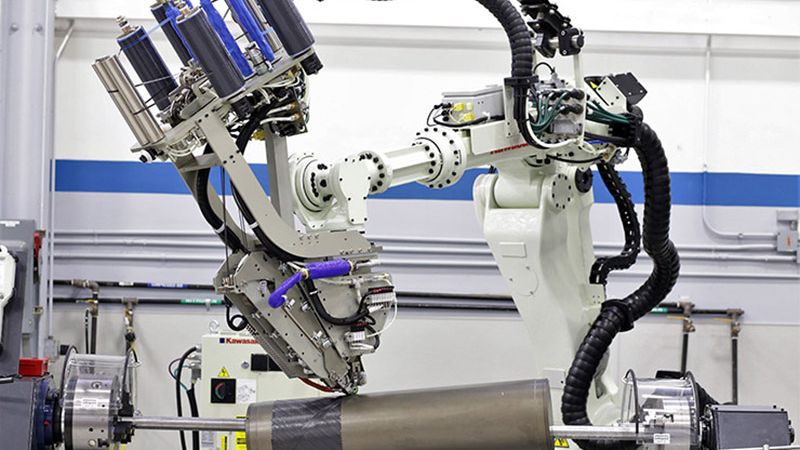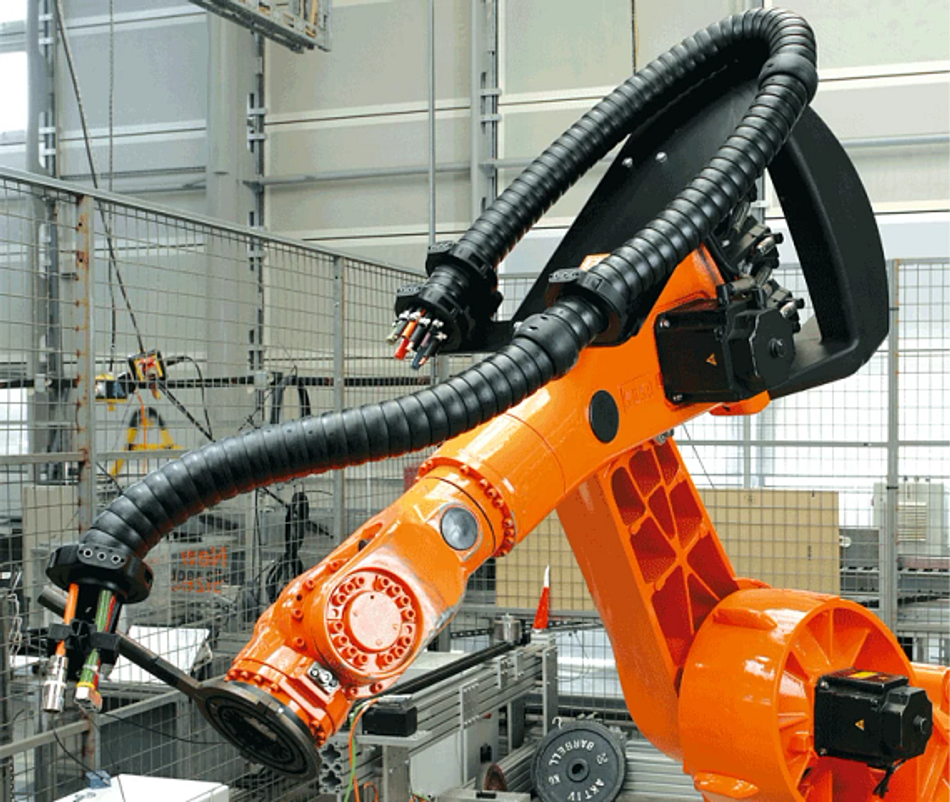Connectivity Enables New Efficiency Gains for Robots in Manufacturing
Article #1 Robot Control Series. Key players are working together to implement single pair ethernet for a fast, connected manufacturing future.

Trelleborg Sealing Solutions
This is the first article in a 7-part series examining solutions for robot control. The series looks into solutions for power, data, and signal, necessary to push the role and capabilities of industrial robots. This series is sponsored by Mouser Electronics, an online distributor of electronic components. Through their sponsorship, Mouser Electronics is dedicated to sharing knowledge about the possibility of a greener, more reliable, and better-connected manufacturing future.
Robots on the smart factory floor are enabling incredible efficiency gains in manufacturing. New robotic equipment paired with sensors and connectivity allows for pervasive and ubiquitous data collection about operational status and effectiveness. This goes for processes happening both before and after the goods being manufactured come in contact with that equipment. Now, the overall equipment effectiveness (OEE) of a given robot may be measured, controlled, and improved upon with precision and flexibility once thought impossible.
The smart factory is a major leap forward from traditional automation to a fully connected and flexible system that can use data from operations to continually learn and improve. Yet to ensure this, industrial robots and machines need the connectivity to ensure the flow of data.

Connected Devices Across the Smart Factory
The critical factor is not the mechanics and productivity of these robots in isolation, but rather how the machines are connected reliably in harsh manufacturing environments. In this connected environment, they work in unison towards the smart factory’s ultimate goals. Critical and reliable connections facilitate the gathering and routing of enormous quantities of data points from the robots and their manufacturing environment.
However, this interconnectivity must be accomplished without an untenable amount of power supplies, headers, cabling, shielding for that cabling, and proprietary onboard computing systems to physically accommodate and maintain.
Ethernet for Industrial Connectivity
Globally, the industrial engineering and automation communities have spent years hashing out a common pathway to develop more straightforward and more sophisticated connectivity for network infrastructure. What is the best choice for connecting the smart factory, from the sensors at the tip of a robotic arm to the analytical ‘brain’ in the computing cloud?
Ethernet may be the best choice of technology for industrial connectivity, based partly on how automotive networks are making a step-function jump up in their network speed and power capability by working within an Ethernet framework. Automotive Ethernet is overcoming many limitations of serial bus protocols, helping provide the reliable and fast connectivity new vehicles need. Industry of all types can learn from the example of automotive manufacturers here.
Rather than having smart factory floor network systems created using a layered build-up of serial, bus, and partial Ethernet, a better, more flexible system may be implemented by using Ethernet everywhere. This flexibility requires the industrial networking ecosystem to map a pathway from where they are to a Single Pair Ethernet (SPE) future.
Designed to meet the needs of the IIoT, Single Pair Ethernet is a cable configuration that uses on pair of copper wires to transmit data at speeds of up to 10 Mbps (with potential to go to 1 GB/s in the future), while also supporting up to 52 watts of DC power in order to provide reliable power to devices and sensors that may not have their own power source. SPE
To establish the future SPE ecosystem, an industrial partner network including companies such as Harting and TE Connectivity are setting standards for transmission protocols, cabling, and device components. Members of the partner program, as well as the ISO/IEC JTC 1/SC 25/WG 3, are in close exchange cooperation with IEEE 802.3 and IEC SC46C for uniform transmission standards and copper data cables.
On January 23, 2020, the international standard for Single Pair Ethernet interfaces in industrial applications was published with IEC 63171-6. According to the International Electrotechnical Commission (IEC), this standard provides the most robust specification type that industrial environments need.

Connecting Data to Multiple Systems
Advances in connectivity are going to benefit many smart factory stakeholders. Robotic equipment makers will integrate connectors and headers and even get dual-functioning power and data signals via a single cable and connector. The beauty is the ease with which they will all connect and feed data to vital software systems, be that the manufacturing execution system (MES) or further up at the enterprise resource planning (ERP) system, with less complexity in cabling and subsystems.
This article was initially published by Mouser and TE in an e-magazine. It has been substantially edited by the Wevolver team and robotics writer Dillon Garrison. It's the first article of a 7-part series exploring solutions for robot control. Future articles provide an overview of servo motor connections, discuss the role of digital twins in robot connectivity and look at trends in manufacturing automation.
Article one looked at gains made by improved connectivity in industrial settings.
Article two looked at the quality of connectors for harsh environments.
Article three provided an overview of common motor types.
Article four listed 6 Connectivity Solutions For Industrial Robotic Applications.
Article five explores cobots and connectivity.
About the sponsor: Mouser Electronics
Mouser Electronics is a worldwide leading authorized distributor of semiconductors and electronic components for over 1,100 manufacturer brands. They specialize in the rapid introduction of new products and technologies for design engineers and buyers. Their extensive product offering includes semiconductors, interconnects, passives, and electromechanical components.
